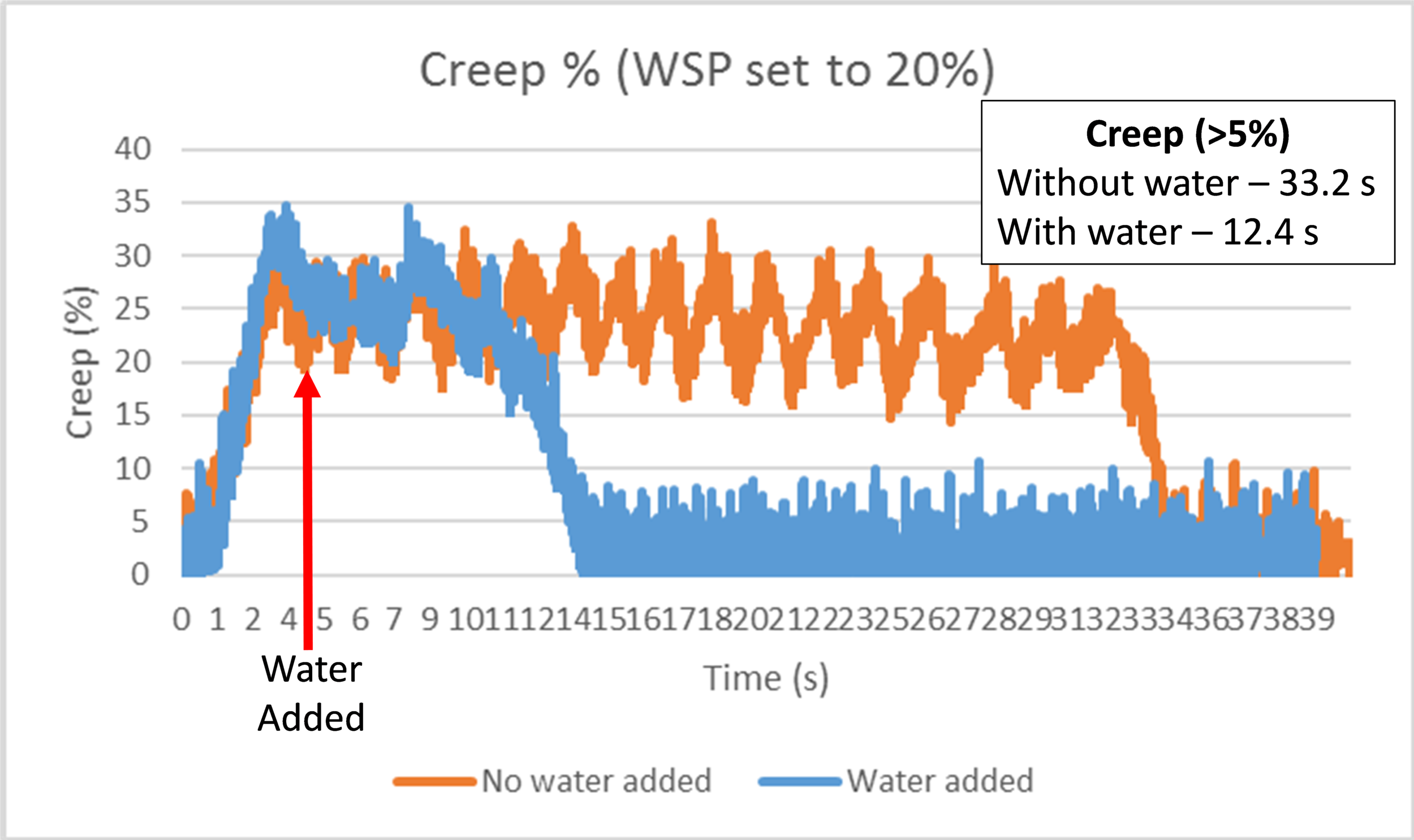Some surprising discoveries from our recent testing
In January 2020 we ran a series of high-speed braking tests using the University of Huddersfield HAROLD full-scale bogie rig. During testing we were able to explore how our Water-Trak system might interact with a train’s Wheel Slide Protection (WSP) system at higher train speeds than have been possible during our track tests. We simulated low adhesion conditions by rolling dried leaves into the wheel and track roller and pre-wetting it with a fine water mist before testing. We also ran braking tests in which we applied paper tape to the rolling surfaces, mimicking a popular rail industry low adhesion simulation method. In both cases we were able to create very low adhesion values of between 0.01 and 0.02. Tests took place at 40mph and 70mph with both 50 and 100 KN loads applied to the rolling contact. The system sensed the difference between the wheel and roller speed during braking and expressed this as a “creep %” value by relating it to the specified running speed. The WSP on the rig was set to release the brakes when creep exceeded 20%. Long periods of WSP operation were observed (more 30 seconds for leaves and well over a minute for the tape) when braking without water addition. When our Water-Trak treatment was applied, these figures both dropped to around 12 seconds, demonstrating a larger than expected effect – see figure 1.
Figure 1: Braking on a leaf layer at 40mph
After running one of the tests without Water-Trak, we noticed that some black marks were still visible on the wheel and the rail – see figure 2, signifying the presence of contaminant residue.
Figure 2: Black contamination on wheel after braking without Water-Trak
We decided to find out if there might be sufficient residue to cause low adhesion – to do this we repeated the previous braking test, pre-wetting the rail surface with fine water misting but not applying the full Water-Trak treatment. To our surprise, each time the train braked, high creep values were recorded and the WSP triggered. We repeated the test several times and observed that full adhesion only recovered on the fourth braking cycle. This is equivalent to three further trains experiencing low adhesion – see figure 3.
Figure 3: “Following train” braking without water addition
Having found that even a small amount of rail head residue can cause low adhesion, we needed to understand what effect Water-Trak treatment might have. We decided to replicate the sequence of tests we had just run, this time using Water-Trak as the initial treatment. Figure 4 shows the creep trace for Water-Trak superimposed on the previous test data. The improvement in WSP operation is once again apparent.
Figure 4: Comparison of WSP activity on first brake application with and without Water-Trak
The test cycle was repeated without further Water-Trak treatment but this time there was no evidence of low adhesion for any of the later braking runs. Figure 5 graphs the creep trace for the Water-Trak treated rail head overlaid on the earlier un-treated braking results.
Figure 5 - Comparison of “following train” braking with and without Water-Trak
The contrast between the two sets of results leads to a clear conclusion – application of Water-Trak treatment from one train is enough to prevent low adhesion events occurring on the three following trains!
To summarise, these tests provided some surprising and very encouraging findings on the impact Water-Trak might make to the operational efficiency of the rail network. Not only did Water-Trak reduce WSP activity significantly but it also provides a major cleaning effect. It greatly reduces the chance of later trains having braking, traction and track circuit problems. Compared with the current technology of high-pressure continuous water-jetting, Water-Trak can be easily mounted on a service train and uses very little water.
We believe this work is only the start, we see further opportunities to enhance our system to deliver an even greater cleaning effect, while maintaining the low environmental impact, simplicity and affordability of our current system. A distributed service train-mounted Water-Trak solution presents an entirely new way to achieve rapid and sustained rail adhesion improvement, leading to greatly optimised rail operations.






